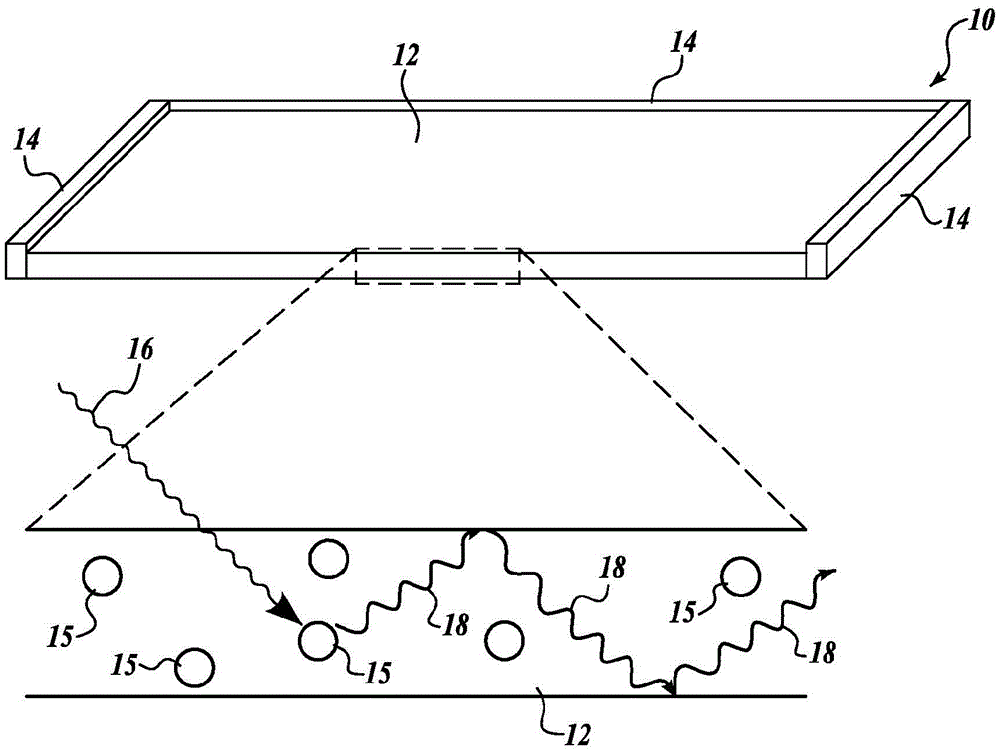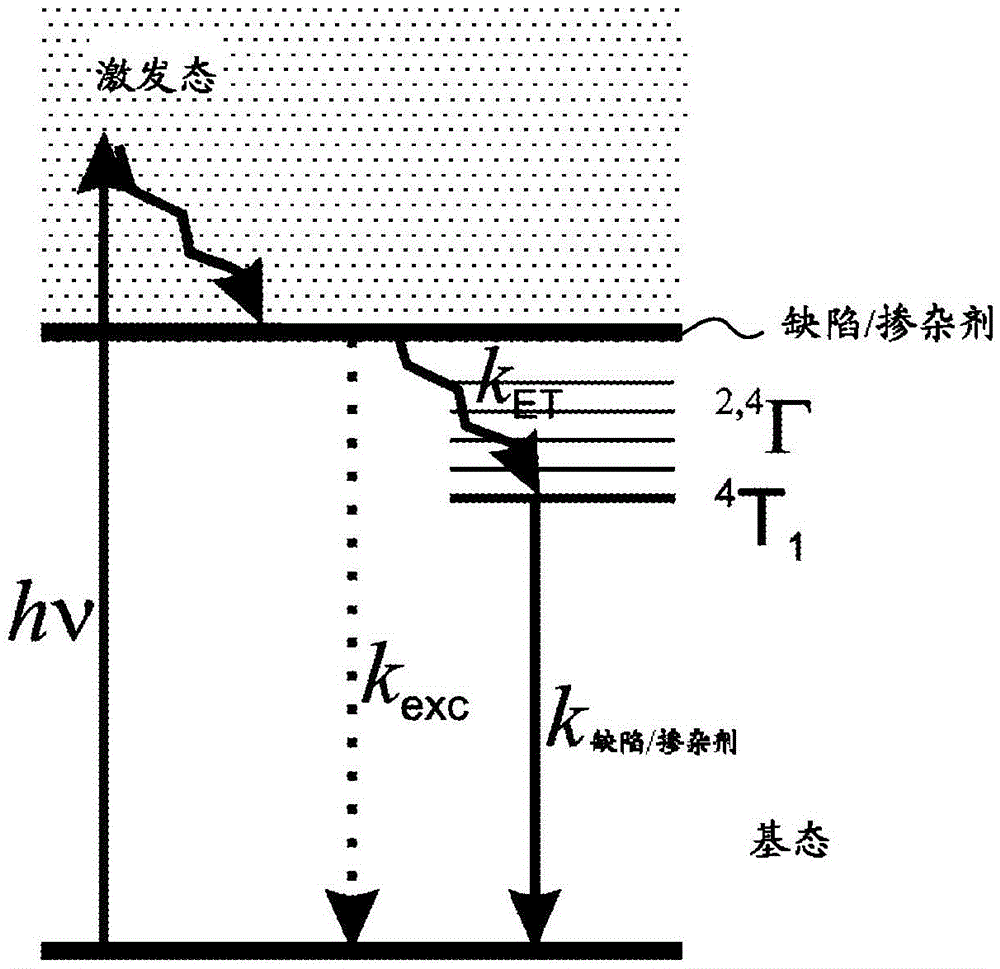Photoluminescent semiconductor nanocrystal-based luminescent solar concentrators
A technology of emitting solar energy and photoluminescence, which can be used in nano-optics, semiconductor devices, light guides doped with fluorescent agents, etc., and can solve problems such as failure.
- Summary
- Abstract
- Description
- Claims
- Application Information
AI Technical Summary
Problems solved by technology
Method used
Image
Examples
Embodiment 1
[0180] Example 1. Preparation and Characterization of Representative Photoluminescence
[0181] nanoparticles
[0182] In this example, the preparation, characterization and use of representative photoluminescent nanoparticles of the present disclosure are described.
[0183] Fabrication and Characterization of LSCs Containing Photoluminescent Nanoparticles
[0184] LSCs were prepared and characterized based on several representative examples of photoluminescent nanoparticles with different structures and compositions. by heating at 270°C in N 2 Under gas pressure, and still in MnCl 2 Thermal decomposition of the tetramer (Me 4 N) 2 [Zn 4 (SePh) 10 ] 30-60 minutes to grow Mn:ZnSe / ZnS core-shell photoluminescent nanoparticles. Then, at 230°C in N 2 The resulting nanocrystals were coated with ZnS shells by continuous slow addition of zinc oleate and trioctylphosphine sulfide in octadecene and oleylamine solutions under gas pressure for 5–25 min. The particles wer...
Embodiment 2
[0205] Example 2: Photoluminescent Nanoparticles of the Disclosure Versus Known Photoluminescent Nanoparticles Comparison
[0206] This example evaluates whether photoluminescent nanoparticles of the present disclosure can reduce losses from self-absorption and scattering relative to other LSC emitters including other types of photoluminescent nanoparticles.
[0207] refer to Figure 18 , normalized waveguide photoluminescence intensity measured in linear, rod-shaped LSCs as a function of the distance between the excitation and collection positions was evaluated for two LSCs incorporating different types of photoluminescent nanoparticles. The first LSC comprises Mn:Zn synthesized as described in Example 1 1-x CD x Se / ZnS (where x value is about 0.1) photoluminescent nanoparticles. The second LSC includes CdSe / CdS nanoparticles, which are examples of "giant" shell core-shell semiconductor nanocrystals, a type of photoluminescent nanoparticle known to have small self-abso...
PUM
 Login to View More
Login to View More Abstract
Description
Claims
Application Information
 Login to View More
Login to View More - R&D
- Intellectual Property
- Life Sciences
- Materials
- Tech Scout
- Unparalleled Data Quality
- Higher Quality Content
- 60% Fewer Hallucinations
Browse by: Latest US Patents, China's latest patents, Technical Efficacy Thesaurus, Application Domain, Technology Topic, Popular Technical Reports.
© 2025 PatSnap. All rights reserved.Legal|Privacy policy|Modern Slavery Act Transparency Statement|Sitemap|About US| Contact US: help@patsnap.com



